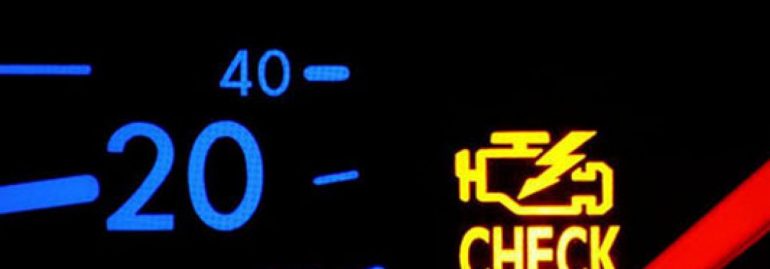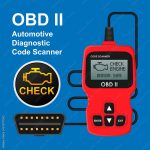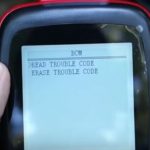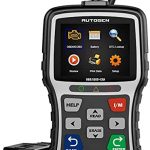Cars are becoming more sophisticated each year. While analog fittings are gone, high-resolution displays have resurfaced. Software fuels the engine control systems. You can configure certain functions of your car yourself, but others are enabled by the manufacturer. Here are some ways to interpret car codes. The codes are not always indicative of a problem. If you don’t know what they mean, contact a mechanic or a technician.
Diagnostic trouble codes
Diagnostic trouble codes are a series of numbers and letters that are generated by the on-board computer in your car. They indicate when a system is malfunctioning. The Society of Automotive Engineers publishes a manual of fault codes. When these codes are displayed on your car, you can be sure that it is the fault you are looking for. Here’s a look at a few of the most common ones. To begin, learn what they mean.
The first character of a DTC is a two-digit number that defines the problem. This number can be anything between zero to ninety nine. The last three digits are specific to the system. A common example of a DTC is P0219. It means that the powertrain is having trouble. The two-digits after the “P” stand for powertrain. Similarly, P0100 indicates an ignition system problem.
Some trouble codes are manufacturer specific. These codes are necessary for emission diagnosis. Some codes are hexadecimal or incremented. If the problem is related to the transmission or engine, you will need to know how to read them. Some codes may be difficult to interpret without the use of special equipment. To determine the code that affects your car, follow these tips:
Once you know what trouble codes mean, you can get started on fixing the problem. Many modern cars use OBD-II technology to identify problems. The codes themselves are stored in the ECU’s memory and can be read by a scanner. These codes follow a simple formula: the first letter of the code denotes the part of the car that is having trouble. If you know how to read them, you can minimize the downtime that occurs from them.
The easiest way to read the codes is by using an OBD-II scanner. These scanners plug into the diagnostic port in your car and read the codes. Some scanners even come with software that translates the codes. You can purchase a code reader for a fraction of the cost and without the hefty price tag. However, a code reader doesn’t offer the same features as a scanner. Regardless of the type of reader you choose, you should be able to diagnose the problem using the codes.
It is important to note that not all problems generate trouble codes. Some may be harmless, and not indicative of major issues. For example, a DTC might indicate a sensor circuit that is out of range, or a malfunction in the emissions control system. To determine what trouble codes are causing the problems with your car, you need to know where they are located. Most cars store trouble codes in the Engine Control Module and the Powertrain Control Module.
Another example of diagnostic trouble codes for cars is P0171 and P0174. These codes indicate that your engine is receiving too much air and too little fuel. It can be a variety of causes, ranging from faulty fuel injectors to disconnected hoses. A faulty fuel pressure regulator can also cause this code. Fortunately, a simple diagnostic scan can help you figure out what’s causing this problem.
Meaning of OBD-II codes
To begin, you must first understand the underlying concept of the OBD-II codes for cars. They are grouped into categories based on their function. Generally, powertrain codes light the Check Engine Light. Other codes relate to the chassis or body systems of the car. A network code reflects a communication loss or module failure. Professional diagnostic scan tools can diagnose codes that aren’t related to the powertrain.
The OBD-II codes in your car are based on the SAE J1979 standard, which defines the parameters of the vehicle. Each PID defines an expected response, and the reader converts that data into meaningful information. However, not all vehicles support all OBD-II codes, and some are even customized by the manufacturer. You should know the codes in your car’s system to determine if it needs to be repaired or replaced.
OBD-II diagnostics monitor the performance of your car’s engine and Emissions Control System. If either of these systems malfunction, the Check Engine Light will turn on. When this happens, the engine will produce emissions that exceed Federal EPA limits, and the OBD-II code reader will help you pinpoint the problem. Some smartphones can even interpret the OBD-II data from a car’s OBD-II system.
The meaning of OBD-II codes for cars depends on the vehicle’s brand and model. Most cars model years 1996 and newer support the selection of diagnostic trouble codes. These codes are stored in a computer management system that helps identify malfunctions and fix them. These codes are categorized into generic and manufacturer-specific categories. Moreover, the codes are easy to understand and follow for any car owner.
If you’ve ever encountered a check engine light in your car, you’ve probably already heard of the codes. These are a warning that there’s a problem lurking in your vehicle. The first thing to do is learn the meaning of the OBD-II codes. This can save you a lot of money on repairs. There are diagnostic scan tools that can be bought to interpret the code.
OBD-II codes are a warning system that tells you when your car needs a repair. They are also known as DTC codes. These codes are almost identical to their DTC equivalents. It is important to note that you shouldn’t assume that you know the meaning of the code because you’re not an expert in this area. In the event of a serious problem, you should seek immediate repair from a certified mechanic. Even though they might not seem like an emergency, failure to repair the issue may endanger your car.
OBD-II code definitions are the same across all vehicles. The first two digits in a DTC refer to the manufacturer of the vehicle while the last three digits refer to the type of system or circuit the vehicle has. OBD-II codes monitor fuel-air ratio of the engine, emissions and fuel economy. Fuel injector and ignition codes are related to problems with the spark plugs.
Common causes of OBD-II codes
One of the most common causes of OBD-II codes for your car is a malfunctioning oxygen sensor. This sensor is responsible for preventing the proper air-fuel mixture to occur. When the oxygen sensor fails, the car loses fuel efficiency, and it may even stall. It is essential to have the vehicle checked by a mechanic to determine the cause of your car’s misfires.
In addition to malfunctioning oxygen sensors, a poor EVAP system can result in an OBD-II code. The code P0171 indicates that the air-fuel mixture is too lean, which means that the engine is burning too much air and not enough fuel. Even if you do not immediately notice any symptoms of this problem, driving your car with this code can lead to worse damage over time.
Check engine light flashes on your Volkswagen. You should replace the spark plugs at around 90,000 miles or if your vehicle starts to misfire frequently. If the check engine light is on but no trouble code is present, it is likely that the gas cap is the problem. Check your gas cap for a leak. If the spark plugs are replaced, you can safely drive your car. The check engine light will stay on if the problem persists. If you continue driving your VW with a malfunctioning ignition coil, you could cause serious damage to your car’s engine.
Another cause of OBD-II codes for cars is a vacuum leak. When your vehicle is not properly inflated, this can result in a knocking noise. When the vacuum leak is located, it can cause the engine to run lean. Also, it may be difficult to start. Another common symptom is an engine knock. This problem can result in detonation under load or when accelerating uphill.
A malfunctioning catalytic converter is another common cause of these car codes. If your vehicle doesn’t run at its peak, your catalytic converter may be damaged and will emit an unhealthy amount of emissions. The P0420 code can be the result of a worn converter. The P0430 code indicates that the converter is damaged. If it is, your vehicle will not be able to run.
If your vehicle’s diagnostics show that the PCM is malfunctioning, it will record a fault code, or DTC, in the vehicle’s memory. The DTC helps the mechanic determine the problem by identifying the cause of the malfunction. This is why diagnostic codes are required for all vehicles that have OBD-II systems. Moreover, all vehicles use the same list of DTCs. This means that the same failure code, such as P0300, will be present on every vehicle from a Volkswagen to a Toyota.
P0171 and P0174 indicate that the air/fuel ratio is too lean in the car. They will display an engine check engine light and may lead to a rough idle. Other common causes of P0171 and P0174 codes are disconnected hoses, a faulty fuel pressure regulator, and a dirty or defected Mass Airflow Sensor. These symptoms can be dangerous.






